What Are the 7 Elements and Principles of Art?
Have yous ever wondered how elements of a photo come together to form a successful image? In this article, we'll await at how to use the seven principles of art and pattern.
These principles of design will help you create better more than interesting images.

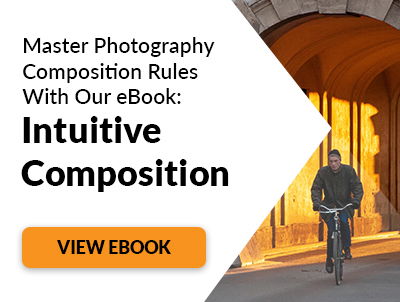
What Are the 7 Principles of Art and Design?
The vii principles of fine art and blueprint are balance, rhythm, pattern, emphasis, dissimilarity, unity and move. Use the elements of art and blueprint – line, shape/form, space, value, colour and texture – to create a limerick every bit a whole.
The elements of art and blueprint are the tools of visual artists. The principles of art and design represent how an artist uses these tools to create visual art.
Past applying the 7 principles of art and design, photographers can create a cohesive image grounded in the foundations of art theory.
Let'southward accept a closer look at each principle.
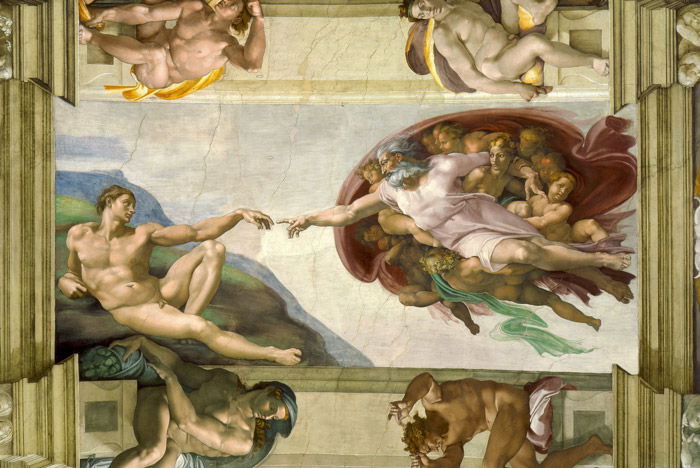
7. Balance
Balance is used to illustrate the visual weight of an prototype. Information technology can either unite a photograph or create division. A carefully balanced image lends a sense of stability to a photograph. An unbalanced image creates disunity or unrest.
Both applications are okay, depending on the desired outcome.
Y'all can achieve residue in three ways:
- Symmetry – both sides of an image reflect the same field of study thing, like a mirror image.
- Disproportion – contrasting elements balance the image. For example, a highly textured surface on ane side of an paradigm, counterbalanced by a shine, matte surface on the other.
- Radial balance symmetry – elements spaced equally around a cardinal betoken, like spokes on a bicycle.
Balance is sensual in that it 'feels' wrong or right. If yous're looking to emphasize balance in an image, try moving your photographic camera to achieve dissimilar perspectives.
You lot tin can also attempt photographing different fields of texture and colour. Don't be afraid to experiment a picayune.

vi. Rhythm
In many ways, composition in music is very similar to limerick in photography. The photographic concept of rhythm borrows heavily from music theory.
Just like a musician reading the notes on a sheet of music, subjects in a space regulate the mode we view a photograph.
The rhythm dictates the recurring or organized/disorganized distribution of visual elements throughout an image.
To introduce a sense of rhythm to your photography, try visualizing musical notation.
The spaces, correlations, and differences between subjects in a photograph like this 1 reflect notes on a sheet of music.
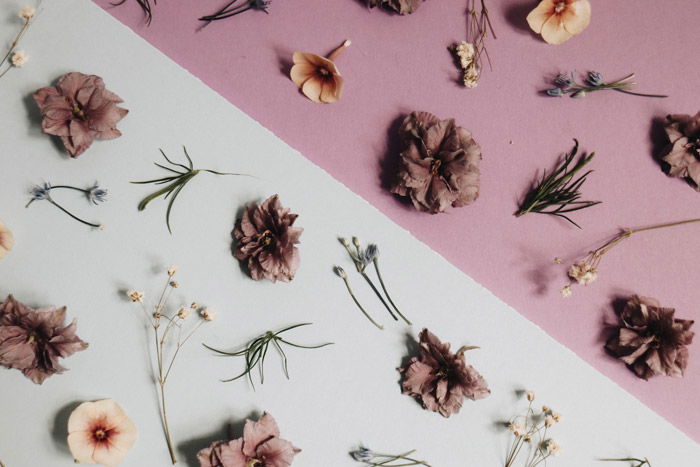
5. Design
The design makes sense of the visual world through regularity. From man-made objects to organic material and abstraction.
Elements of blueprint tin can be organized in a predictable manner to form a pattern. Put simply, patterns are repetitions of the elements of art and design. These work in unison inside a unmarried frame.
The man eye is calibrated to seek out patterns. This can evoke surprising emotional reactions from a viewer.
Patterns are an agile principle of art and design, they elevator an image off the page. Incorporating pattern into your photography is equally much about exploring as it is well-nigh photographic technique.
Try looking out for architectural and urban features or organic subjects like flowers. Once you lot start looking, you will exist amazed by the abundance of patterns around yous.
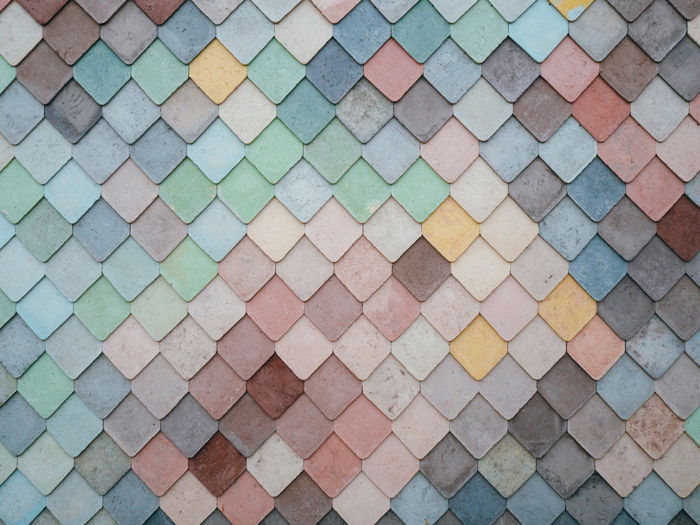
iv. Accent
Emphasis shapes the heart of interest in an image. Colour, infinite, texture, and line piece of work together to determine the focus of an image.
There are many ways to create emphasis in a photograph. Spacial emphasis involves the orientation of a subject within the photographic frame.
A lone bailiwick located in the middle of an image will attract attention. It is the most readily available component of the photo.
For a photograph with a number of subjects, selective group guides the viewer'south heart to particular focal points.
The size of a subject field also dictates the way the viewer will 'read' a photo. A larger subject field suggests a closeness to the surface of the photograph. It commands greater attention than that of a smaller subject in the groundwork.
Incorporating size tells a story almost the physicality of the subjects in a photograph, adding depth and perspective.
Colour is another tool that can cultivate emphasis. A brightly coloured subject within a night scene gives a sense of vibrancy and life to an prototype. Information technology draws the viewer'southward eye.
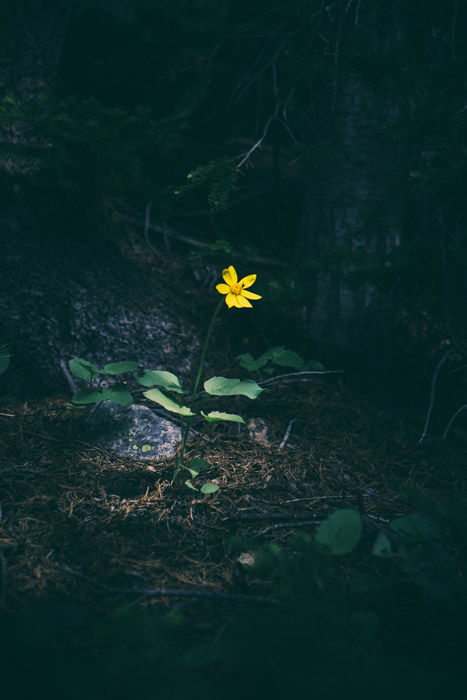
iii. Dissimilarity
Contrast is created when 2 or more opposing elements are present in a photograph. Light against dark, warm against cool.
But contrast includes physical elements as well. The texture is another fashion to utilize the principle of contrast in photography. Including two or more textures in a photo not merely introduces tactility, but it too creates a sense of place.
A round water droplet resting on the fuzzy tendrils of a plant is an case of a textually contrasting subject matter.
Contrasting subject affair brings the narrative to a photograph. Y'all tin can also endeavour juxtaposing attributes like sharpness and softness, one-time and new or curved and straight.

2. Unity
Unity describes the visual relationship between elements in a photo. Information technology helps create a cohesive image.
Using similar colours or tones, concepts or elements cultivates a sense of unity.
Disunity is the reverse. Bad cropping, awkward perspectives or over and underexposure disrupt an image and can cause disunity.
Another aspect that underlies a unified image is the articulate idea of a photographic outcome. A photographic issue, or goal, is the idealized mental image of a photo before information technology'due south taken.
By pre-visualising an effect, a photographer can develop a clearer idea of the purpose of a photo. This, in turn, allows a photographer to take greater control of the image.

i. Movement
The term 'movement' in photography often describes the relationship between the photographic camera's shutter speed and a bailiwick. When it comes to art and blueprint, movement refers to the path the viewer'southward eye takes while reading a photograph.
Move is shaped past the elements and principles of art and design. A photographer can take control of the way a viewer absorbs a photograph.
For example, the utilize of line in photography creates 'visual highways' that guide a viewer'due south heart.
Jagged lines create excitement, shifting the viewer'due south gaze from i point to the next. Curved lines are more subtle. These reduce the speed at which a photograph is viewed.
Agreement the nature and psychology of homo sight is an important part of decision-making movement. For example, the man eye is more sensitive to sure colours than others.
Red is attention-grabbing. Soft blues are gentler and more subtle. Movement tin can be directed through the selective utilise of colour and saturation.
In that location are a lot of dissimilar means to guide the viewer's eye through a photograph. Movement studies the nature of the center as well as the psychology behind how we absorb visual information.

Conclusion
The seven principles of art and blueprint in photography; balance, rhythm, pattern, emphasis, contrast, unity and motility, class the foundation of visual arts.
Using the seven principles allows you to have greater control of your photographic practice. This will atomic number 82 to meliorate photos and more photographic opportunities.
Source: https://expertphotography.com/principles-of-design-photography/
0 Response to "What Are the 7 Elements and Principles of Art?"
Post a Comment